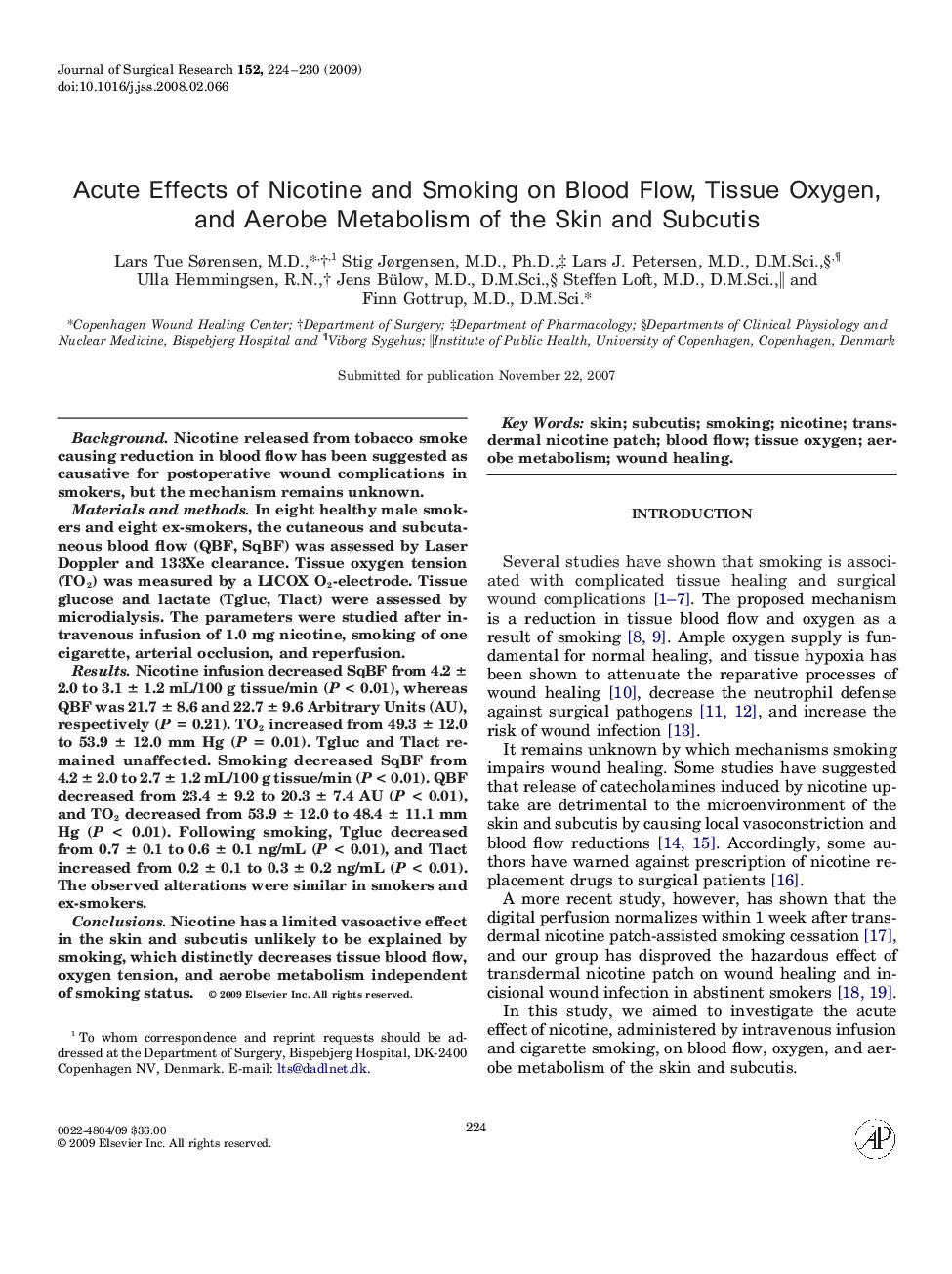| Article ID | Journal | Published Year | Pages | File Type |
|---|---|---|---|---|
| 4303881 | Journal of Surgical Research | 2009 | 7 Pages |
BackgroundNicotine released from tobacco smoke causing reduction in blood flow has been suggested as causative for postoperative wound complications in smokers, but the mechanism remains unknown.Materials and methodsIn eight healthy male smokers and eight ex-smokers, the cutaneous and subcutaneous blood flow (QBF, SqBF) was assessed by Laser Doppler and 133Xe clearance. Tissue oxygen tension (TO2) was measured by a LICOX O2-electrode. Tissue glucose and lactate (Tgluc, Tlact) were assessed by microdialysis. The parameters were studied after intravenous infusion of 1.0 mg nicotine, smoking of one cigarette, arterial occlusion, and reperfusion.ResultsNicotine infusion decreased SqBF from 4.2 ± 2.0 to 3.1 ± 1.2 mL/100 g tissue/min (P < 0.01), whereas QBF was 21.7 ± 8.6 and 22.7 ± 9.6 Arbitrary Units (AU), respectively (P = 0.21). TO2 increased from 49.3 ± 12.0 to 53.9 ± 12.0 mm Hg (P = 0.01). Tgluc and Tlact remained unaffected. Smoking decreased SqBF from 4.2 ± 2.0 to 2.7 ± 1.2 mL/100 g tissue/min (P < 0.01). QBF decreased from 23.4 ± 9.2 to 20.3 ± 7.4 AU (P < 0.01), and TO2 decreased from 53.9 ± 12.0 to 48.4 ± 11.1 mm Hg (P < 0.01). Following smoking, Tgluc decreased from 0.7 ± 0.1 to 0.6 ± 0.1 ng/mL (P < 0.01), and Tlact increased from 0.2 ± 0.1 to 0.3 ± 0.2 ng/mL (P < 0.01). The observed alterations were similar in smokers and ex-smokers.ConclusionsNicotine has a limited vasoactive effect in the skin and subcutis unlikely to be explained by smoking, which distinctly decreases tissue blood flow, oxygen tension, and aerobe metabolism independent of smoking status.
